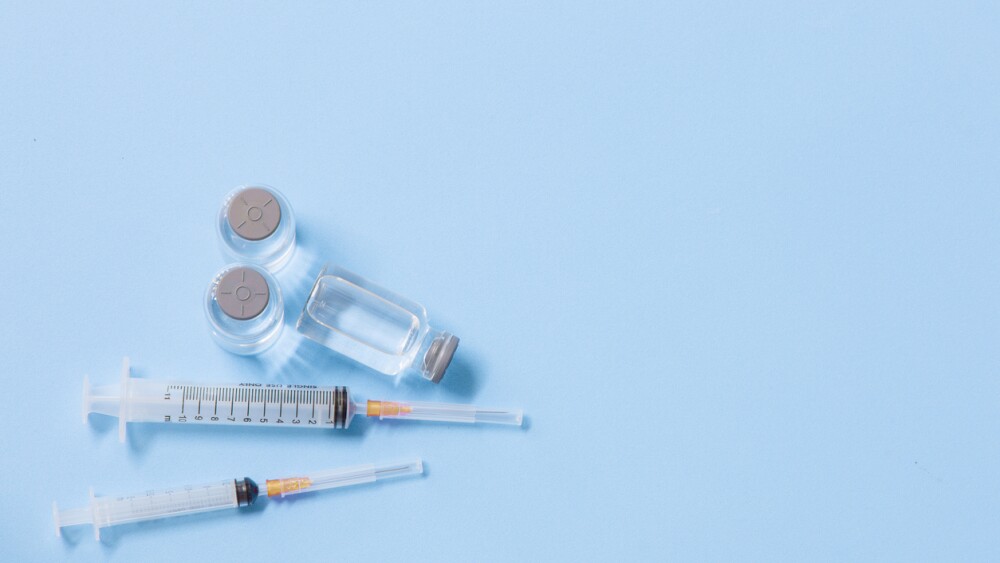Population demographics appear to play a crucial role in the development of immunity via vaccination.
Currently, vaccines are being developed across the world to protect the masses against the novel SARS-CoV-2 virus. They aim to promote active immunity and prevent people from developing severe COVID-19.
Immunity refers to the complex biological system involved with recognizing the body and its components and differentiating them from any other foreign entity. In other words, immunity is the body’s mechanism of combating what is not its own.
Active immunity refers to the body’s ability to produce antibodies (proteins developed within the body to fight infections) against foreign pathogens, and passive immunity refers to antibodies transferred to the body directly, without the body itself fighting the infection.
The active form is induced in the body when it fights infections or diseases, or when a vaccine is administered in the system. Vaccines contain proteins mimicking infectious microbes that make the body aware of an upcoming infection, translating into an immunogenic reaction and antibody formation.
However, as no two bodies are the same, the degree of immunogenicity also differs between two people, and largely, between populations. Population demographics also appear to play a crucial role in the development of immunity via vaccination.
The Potential Role of Race and Ethnicity
Researchers at Simon Fraser University were among the earliest to discover the individualistic response that people have toward a vaccine or intervention, despite these being designed to treat the same condition.
The immunoglobulin heavy (IGH)-chain locus is responsible for producing genes that encode for different antibodies that are eventually used by B cells to fight off infections. These researchers sequenced the DNA in the IGH-chain locus in the chromosomes of 425 people of Asian, African and European descent. They located 11 possible large DNA insertions and deletions in the locus that were hypothesized to determine individualistic antibody gene count/diversity and, in some cases, disease susceptibility. This piece of comprehensive research was later integrated into the official human genome project assembly.
“Time will confirm the extent to which this is true. But we’ve found that sections of the IGH-chain locus’ DNA sequence are either missing or inserted into a person’s genome, and this could vary depending on ethnicity,” said Corey Watson, a postdoctoral researcher at the Mount Sinai School of Medicine in New York at the time.
Scientists also surmised that such mutations in the IGH-chain locus were brought upon by environmental factors. These findings provide racial and ethnic information crucial in studying diseases and our body’s response to them.
The impact of ethnic differences in triggering immune responses has been demonstrated multiple times in other research studies. Disparities in serologic responses to vaccines were observed between different ethnic groups for the Haemophilus influenzae type b - tetanus toxoid conjugate vaccine or the Haemophilus influenzae type b polysaccharide-Neisseria meningitidis outer membrane protein conjugate vaccine.
In another study, Rubella vaccines provoked significantly higher titers of neutralizing antibodies in children of African ethnicity compared to those of European descent or Hispanic ethnicity.
A U.S. study found significantly higher seroprevalence rates of antibodies to the measles virus in African Americans compared to Caucasians. Antibody titers to the pertussis vaccine were significantly and consistently higher in African American children compared to Caucasian children. In another study conducted in Northern Canada, native Innuit and Innu infants developed higher antibody titers to a measles vaccine compared with those of Caucasian descent.
Geographical and Environmental Factors Also Apply
Geographical and ecological factors also affect immune responses. Efficacy provided by the Bacillus Calmette-Guérin (BCG) tuberculosis vaccine has been shown to increase with a greater distance from the equator. The rotavirus vaccine, RotaTeq, also showed distinct patterns of efficacy in different geographical locations. Its effectiveness in preventing hospitalization and emergency room visits was 97% in the U.S., 95% in Europe and 90% in Latin America/Caribbic, but only 48.3% in Asia and 39.3% in Sub-Saharan Africa.
As one traces the origin of life to where it starts, the mother’s womb, one would find even more diverse features affecting immune system development. The gestational period is crucial in shaping the fundamental organs, systems and development of the innate immune system. The mother’s health during pregnancy greatly impacts the growth and development of the yolk sac, placenta and fetal organs like the liver, spleen and bone-marrow – all of which are crucial to the formation of haematopoietic stem cells that later give birth to immune cells. Hence, the environment at birth is the primary and pivotal progenitor of immune responses in an individual.
Immune Response Highly Dependant on Life Stage
Research has shown that young children and the elderly are the most susceptible to infections. On one hand, infants have naïve immune cell phenotypes while residing in the mother’s womb that only mature to their full potential with time. This means that while growing up, children are more prone to infections due to a developing immune system.
On the other side of the life cycle, immune systems of the elderly are on the decline with gradual reduction in cell function and immune reaction towards infections. A recent population analysis of more than 1,000 individuals found that 24 out of 92 protein biomarkers in the serum of adults were strongly influenced by age.
This theory has been continuously demonstrated for influenza vaccines. On average, these vaccines show 80 to 90% efficacy in younger populations in preventing complications and severe disease, but this rate drops to just 30 to 50% in the elderly. Defects in both innate and adaptive responses accumulate during the aging process in a phenomenon known as immunosenescence.
This “immunosenescence” begins to affect people’s health at about age 60, said Janet Lord, a professor in the Institute of Inflammation and Ageing at the University of Birmingham, UK.
Increasing age reduces the output of T and B lymphocytes, which restricts the capability of CD4+ T cells to help in differentiation of B cells into antibody-secreting cells. With the lack of support from CD4+T helper cells, B cells become more prone to being differentiated into short-lived plasma cells instead of undergoing germinal center maturation, which is crucial for antibody production, differentiation and maturation.
More research is required in this field on the specifics of declining immune functions, but emerging biomarker assays have shown that age is correlated with a decline in immune responses.
Battle of the Sexes – the Immunity Version
Additional studies have shown hormonal variations, sex-chromosomal differences and environmental factors to be another determinant of immune responses. Antibody responses to bacterial and viral vaccines have often been seen to be higher in females than males. This also implies that the effective vaccine dose may be lower for females than for males.
In dose-response studies with the inactivated influenza vaccine, women vaccinated with a half-dose influenza vaccine achieved equivalent antibody titers in comparison to males who received the full dose vaccine. Females have consistently reported more frequent and severe local and systemic reactions to viral and bacterial vaccines than males, at least among young and aging adults. While this may be due to a reporting bias, it is difficult to deny a possibility of greater inflammatory responses among women than men.
There are also pre-existing social conditions that can impact a person’s response to a vaccine.
“Each of our immune systems is a mosaic composite of all that we’ve been through and all that we have and all we’ve recently been dealing with,” Dr. Mark Loafman, MD recently told NBC 5 Chicago. “Our individual response varies. Everybody gets the appropriate immune response.”
According to Dr. Chris Thompson, MD, an immunologist and associate professor of biology at Loyola University Maryland, factors that can influence a person’s reaction to a vaccine include health, genetics, nutrition, age, gender, preexisting immunity, environment and the use of anti-inflammatory medicines.
As these studies show, patient demographics are crucial in determining the strength and potency of an individual’s immune system. Hence, it is crucial to consider these factors in recruitment designs of clinical studies across the globe to combat novel pathogens like SARS-CoV-2 and put an eventual end to the COVID-19 pandemic.





